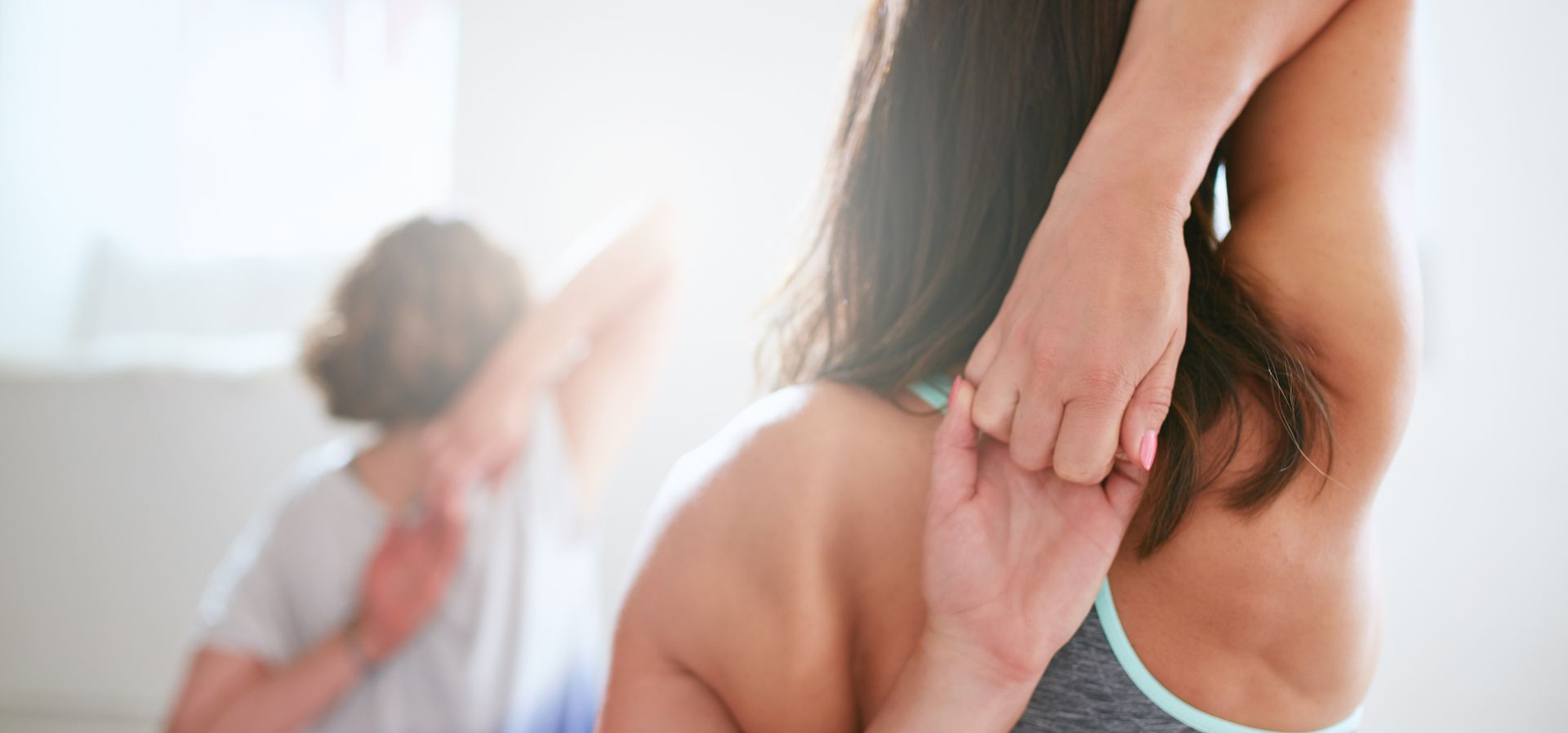10333 E. 21st N. #406 | Wichita, KS 67206 Phone: 316-630-9944
Physical Therapy for Chronic Pelvic Pain
Many women suffer in silence or are afraid or embarrassed to talk about such a personal issue – chronic pelvic pain, including painful intercourse and interstitial cystitis. Other women visit many healthcare providers seeking answers about the source of their pain, and an estimated 15 percent of women aged 18-50 experience chronic pelvic pain, which can vary in intensity and increase in severity during menstruation. It can also affect a woman’s ability to work and perform activities of daily living, including walking, sitting, bowel movements, sexual intercourse and the use of tampons as well as impact her relationships with her spouse or significant other as many women avoid sexual intercourse because of the pain. Chronic pelvic pain is common, and it can be treated effectively with physical therapy.
Chronic pelvic pain can present itself in numerous ways:
- Lower abdominal pain
- Painful intercourse (dyspareunia)
- Itching or burning around the vagina or pelvic floor (may have diagnoses of frequent yeast infections)
- Pain in the bladder or rectal areas (may have diagnosis of interstitial cystitis)
- Painful clitoral area and/or inability to achieve orgasm
- Low back pain
Other names and related diagnoses can include:
- Dyspareunia
- Vaginismus
- Vulvodynia
- Vulvar Vestibulitis
- Interstitial Cystitis
- Pudendal Neuralgia
- Pelvic Inflammatory Disease
- Coccydynia
- Perineal pain
Sometimes, these symptoms can be related to endometriosis, ovarian cysts, yeast infections or other medical problems, but in some instances, the woman has undergone numerous diagnostic procedures including laparoscopy, and the source of the pain remains unknown. This is where a relatively new specialty within physical therapy can help with pain relief and return a woman to a more normal level of functioning, whether that’s normal bowel and bladder function or pain-free sexual intercourse.
Pam Palmer, physical therapist and founder of Palmer Physical Therapy for Women, has seen women who frequently complain of painful intercourse, which can be devastating to a relationship. The woman might feel that it’s her fault she experiences pain with sex. Her partner might not understand the problem. This frustration can lead to diminished sexual interest and avoidance. Pam has also seen many women suffering from interstitial cystitis (IC), which includes a variety of symptoms with an unknown cause. Women with this diagnosis suffer from inflamed bladder walls, intense bladder or chronic pelvic pain and pressure and the need to urinate frequently with urgency, and most complain of painful intercourse. Symptoms worsen during menstruation, and medications are not effective at controlling the pain.
To treat chronic pelvic pain with physical therapy, a physical therapist trained in women’s health will evaluate the pelvic area from a muscular, skeletal and nerve standpoint and may find that muscles are in spasm, the spine or pelvis may be misaligned and nerves may be irritated or not functioning properly – all of which can result in pain and dysfunction. She will then calm irritated nerves and stretch muscles gently back to normal lengths using individualized physical therapy techniques, such as bladder and pelvic floor muscle re-training. Recent studies show that a manual physical therapist specializing in pelvic floor dysfunction can relieve discomfort and improve muscle, bowel and bladder function.
The following are examples of actual cases treated with physical therapy for chronic pelvic pain:
Names have been changed to protect patient privacy.
Sara suffered from chronic pelvic pain for years. She had pain with pelvic exams, sexual intercourse and rectal pain following bowel movements. Because a gynecological cause was suspected as the source of her pain, she underwent a hysterectomy. She continued to suffer following this surgery for another two years. She admits thinking her doctor was crazy for suggesting she see a physical therapist. She could not imagine what type of physical therapy could be done for her chronic pelvic pain. Reluctant, but desperate for a solution, she went to physical therapy. Within a few weeks, she had a decrease in her symptoms by 80 percent.
Bev experienced low back pain and pain in her lower abdomen and groin for more than two years. Like Sara’s story, a gynecological cause was believed to be the source of her pain, and she underwent a hysterectomy. In addition to her other symptoms, she began to experience vaginal pain following the procedure. She didn’t understand how physical therapy could help, but thought she should explore every possible option. Her symptoms were related to nerve irritation in the spine, and she did very well with physical therapy.
Jill remembers pain with any attempt to use a tampon from the time she was 15 years old. She recalls pain with pelvic exams, and, on occasion, not being able to tolerate the exam due to pain and muscle spasm. She had saved herself for marriage, was newly married and experienced painful intercourse. This took a toll on her physically and emotionally. Following evaluation and treatment with a women’s health female physical therapist at Palmer Physical Therapy for Women, she found decreased pain with intercourse, decreased cramps with menstruation, decreased constipation and improved bowel function.
Kari lived with chronic pelvic pain and complained of burning and itching in the vaginal area for more than three years. Her symptoms were worse with sitting, walking and during menstruation. She saw numerous specialists and was treated for various diagnoses including vulvar vestibulitis and contact dermatitis without relief. A physical therapy evaluation revealed her symptoms to be related to her spine and nerve irritation. She was 75 percent better and managing her symptoms independently within just one month.
Chronic pelvic pain can be treated effectively with physical therapy. It is not “all in your head,” and it is not an inevitable part of menstruation. Women do not have to live with chronic pelvic pain, painful intercourse or pain from interstitial cystitis. If you are experiencing symptoms of pelvic pain, consult a women’s health physical therapist at Palmer Physical Therapy for Women to evaluate your needs and move toward recovery.



Proven results,
best outcomes for your money.
Palmer Physical Therapy for Women
10333 E. 21st N. #406 | Wichita, KS 67206
Phone: 316-630-9944